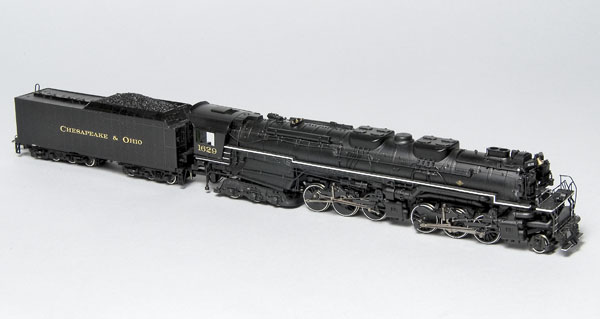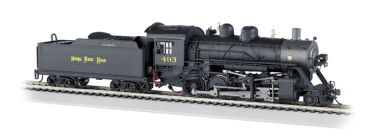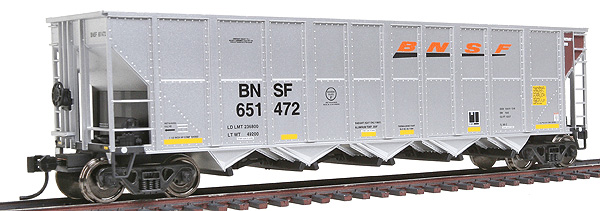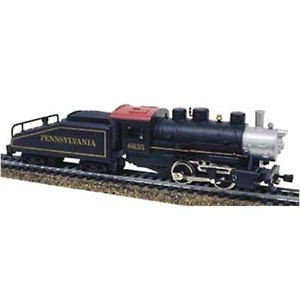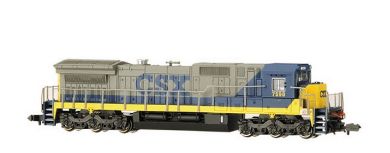The packaging is typical of what you would expect from such an engine costing upwards of $300. I had read that some users found the engine’s mounted details to be fragile, or weakly mounted, but I discovered nothing had parted from the engine or been bent during shipping. I had also read that the user was expected to mount some of the details, but I was not prepared for the variety, number, and the daintiness of many of the pieces. I didn’t have a problem with the grab bars, two for the engine cab and four for the tender corners. Additionally, a second cab with a longer overhung roof is provided should the user wish to have that look for accuracy and a closer looking coupling more like the prototype’s. I unfortunately broke the screw stanchion mounted to the firebox arch and was forced to restore the original cab. My impression is that the plastic is a fragile type. I was also forced to admit defeat in my attempts to mount the safety retaining chains and their bolts on the tender trucks and lower frame. I just don’t have the ability, even though I was using a flashlight under bright halogens and an Opti-Visor. Again, it may be just me, but I couldn’t reconcile the meagre instruction sheet with the requirement to mount six brake assemblies behind the drivers. For me, they wouldn’t fit without some cutting. That’s all I will say about that particular puzzle. I won that round, but it took some doing.
This engine is apparently close to scale in all respects if one goes by a visual comparison to the archived images available at several sites on-line. It is a handsome model, nicely painted, and it sits cleanly on the rails. No slightly light axles or individual wheels hanging above the rails due to compressions, torsions, or poor castings that I could detect. The valve gear and positioned appliances, piping, conduit, and holding tanks are all first class if my modest stable of engines serves as a reasonable pool for comparison. In fact, I would feel confident in asserting that this one engine is the most detailed of the ones I own, and that is before all the little bits have been installed.
Rivarossi’s Allegheny is pleasingly heavy. It has two traction tire axles to aid in traction. Included in the box, thankfully, are two all metal driver wheel and axle assemblies that the user can use in their stead if so desired. I personally don’t favour the rubber tires, so when these two wear out, I will happily make the change.
There is a multitude of copper pickups under this engine, even on the rear engine truck. I had a stall a couple of times when it was first put into use, but the problem seems to have gone away except for one location and then only in one direction. It’s a puzzle still.
The sound system seems on par with others in my inventory. It matches what I have come to expect for modern sound decoders. My only quibbles are with the whistle sound file and the high-pitched hissy chuffs. The whistle is a chime set, which is plainly wrong, and the articulated chuffs sound very light and hissy, not deep and powerful.
My last concern is with the drawbar. It is a two-piece device comprising a long metal tab which is retained and centered with a screw and spring arrangement fastened to the firebox underside. The tab has four or five small holes through which the tiny nib on a plastic extension juts, if shallowly. The sliding extension has, at its rear end, a pincher of two curved and fairly robust tines that do not close into a loop. The tender’s towing pin is meant to be inserted into this pincher. It works, to be sure and fair, but that tiny nib is really the weak link in this rather important component.
So far I have been focusing mainly on features and functions that have given me pause. It has been the same with every engine I have purchased (twelve now). But every one of my purchases, all carefully considered and highly desired before I placed the orders, have provided me with many hours of pleasure. This engine from Rivarossi, still very new, doesn’t seem to want to deviate from this trend. It is a looker by any standard, runs like a top, and can pull at least 20 weighted hoppers with fake coal loads, plus a caboose, up my 3%-plus grades with minimal slipping. Its neutral and running sounds are as good in quality as ever from Loksound, and the decoder was easy to program on my older Digitrax system.
To summarize, Rivarossi has provided a very nice runner in this model; I believe it should appeal to many steam lovers in HO. This hefty, imposing locomotive has some challenges for the buyer. I would characterize this model as sophisticated, and its appeal will be greatest to the sophisticated modeller who welcomes a challenge and who wants good value.





